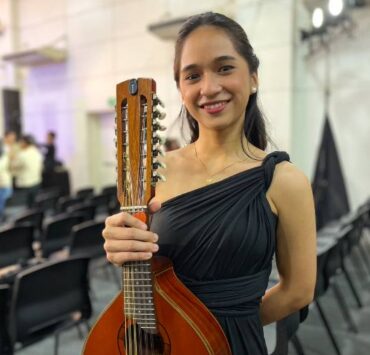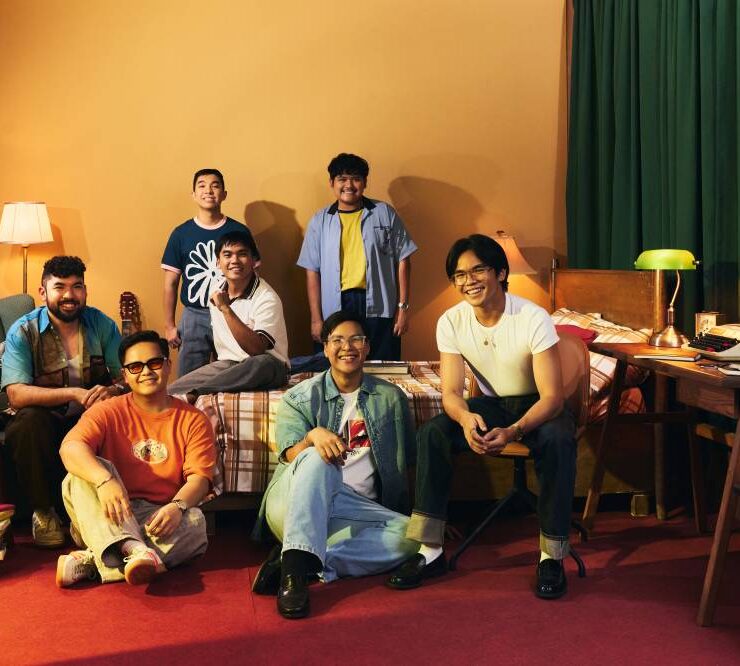A night of ‘rondalla’ at UP
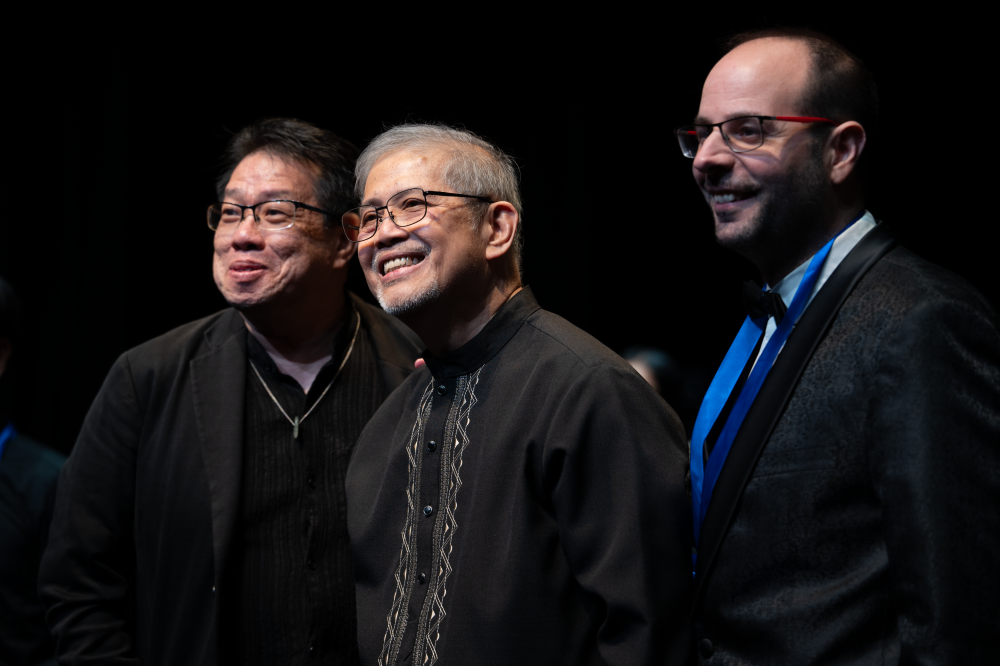
What started as a desire to celebrate rondalla and musical patrimony in grand festivals led to the formation of Kuwerdas Filipinas, the first professional rondalla group.
Last month, they sat onstage at the GT Toyota-Asian Center Auditorium at the University of the Philippines (UP) Diliman—an ensemble composed of 50 musicians who had come together from different parts of the country, united by their love for rondalla.
“While the rondalla was bequeathed by Spain to the Philippines via the comparsas and estudiantinas, bands of musicians and students who were playing mostly plucked strings instruments, the rondalla was reshaped and reformulated by the Filipinos to suit their local taste, aesthetic and musical needs, as well as social and metaphysical environment,” wrote National Artist for Music Dr. Ramon Pagayon Santos, director and conductor of Strings of Unity.
He continued, “It transcends social and artistic distinctions as gender, age, religion, family, school, and professional vis-à-vis amateur practice.”
The members of Kuwerdas Filipinas are of different ages and backgrounds—some are students and some are professionals.
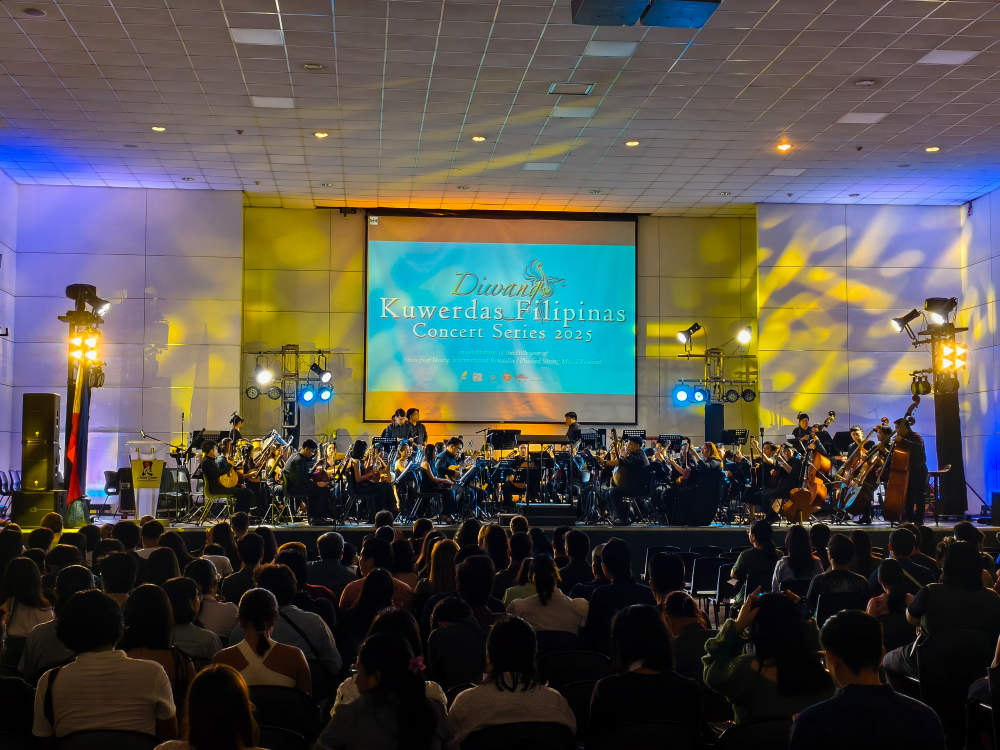
“Many of them are professional musicians. One is our associate dean at the College of Music, some are members of the UP Symphony Orchestra, one bass player had been a dean at another school,” Kuwerdas Filipinas music director and conductor Josefino Chino Toledo, who is also a professor emeritus at UP, told Lifestyle.
They were ready to do what they do best: wield their instruments (bandurria, octavina, laud, guitar, cello, double bass and percussion), perform, and touch audiences with music.
It was the last show of the Kuwerdas Filipinas Concert Series 2025, presented by the National Commission for Culture and the Arts (NCCA), the Musicological Society of the Philippines (MSP) and the Office of Senator Loren Legarda in cooperation with the UP Diliman Office for Initiatives in Culture and the Arts and the Cultural Center of the Philippines. The previous two shows were held at the Tanghalang Ignacio Gimenez (CCP Black Box).
20 years
The concerts were a big part of “Diwang: Musika ng Rondalla, Musika ng Pagkakaisa,” a celebration of the 20 years of Strings of Unity: International Rondalla/Plucked String Music Festival.
Strings of Unity was created by the Music Committee of the NCCA “as a flagship project and model activity of the Unesco’s International Music Council’s ManyMusics Action Program.” The first festival, which drew ensembles from various corners of the Philippines and the world, took place in Naga City in 2004.
In 2017, they held a two-week Rondalla Music Camp in Baguio City, gathering 100 rondalla scholars and 26 conductors from different parts of the Philippines for intensive training.
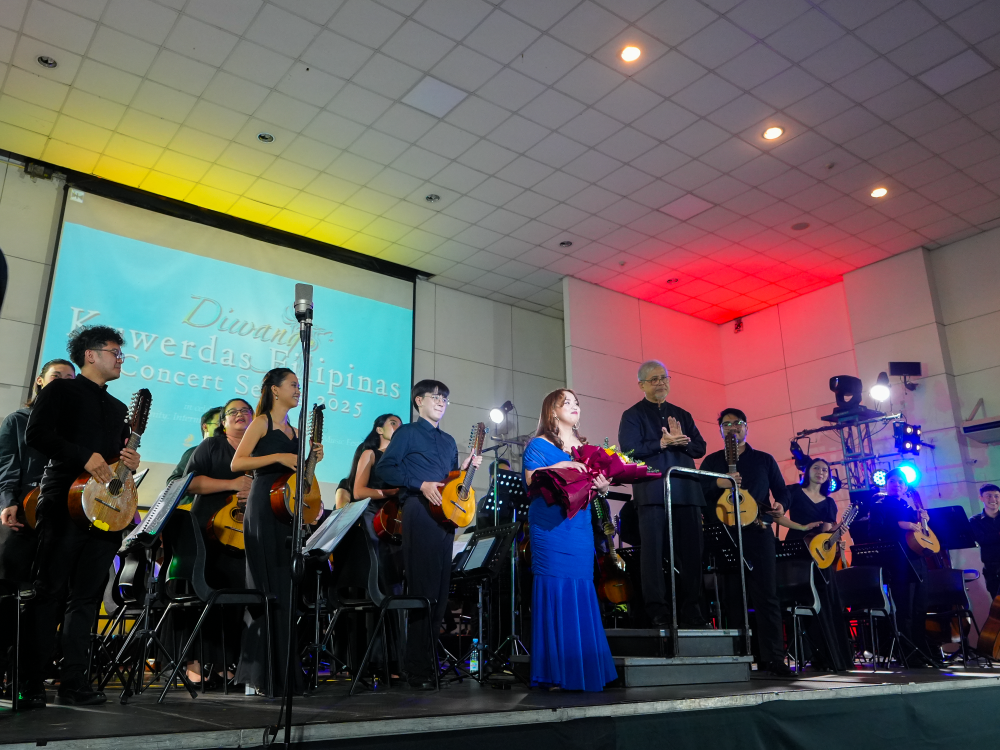
The following year, Kuwerdas Filipinas was established by Santos, bringing together 50 of the best rondalla musicians in the Philippines’ first symphonic rondalla group. Since their debut at CCP in 2018, the group has been recording music, collaborating with composers from all over the world, headlining concerts, and pushing the boundaries of rondalla with their memorable performances.
And that’s what they did again at the Kuwerdas Filipinas Concert Series 2025, with Toledo conducting, in front of a crowd that included many young rondalla musicians from different schools and communities.
Kuwerdas Filipinas played a number of songs including eight new commissioned works by composers from here and abroad: “Sagayán pára sa Kuwérdas” by Nilo Alcala, “Palabunibunyan” by Robin Estrada, and “Zupf” by Conrado del Rosario, all from the Philippines; “Wooden Boat, Little Star” by Eve Duncan of Australia; “Night Beings” of Yuval Avital of Israel and Italy; “Grandpa Blues” by Alessandra Salvati of Italy; “Sleep With Your Song” by Chong Kee Yong of Malaysia; and “Euphoria” by Miran Tsalikian of Greece.
World premiere
Chong and Tsalikian were present for the world premiere of their compositions.
Chong, who attended all three nights of the concert series, told Lifestyle, “All the pieces are very unique… and the different percussion setup is amazing. I mean, it’s never been heard in other countries, it’s amazing. All the composers have a very unique sound. Maestro Chino is doing so good, every piece sounds so, so good. I already heard all the pieces three times, but I think today is the highlight.”
His composition “Sleep With Your Song,” inspired by a folk song he learned while on an immersion trip in Banaue, was written for soprano Stefanie Quintin-Avila who did a fantastic job performing the challenging piece. Chong said, “I’ve known her since she was in UP, she’s a very good soprano. The song is very suitable for her, and she’s from that region too. It has very high notes, like the mountains. She managed to do it so well and so beautifully.”
Chong loves the variety of plucked instruments used in rondalla. “They have a variety of register and color and a lot more resonance. You can do it as percussion, you can play it as a melody instrument. You also can play with a very special color, like the daily noise in the city. It’s very beautiful. It sounds like an orchestra.”
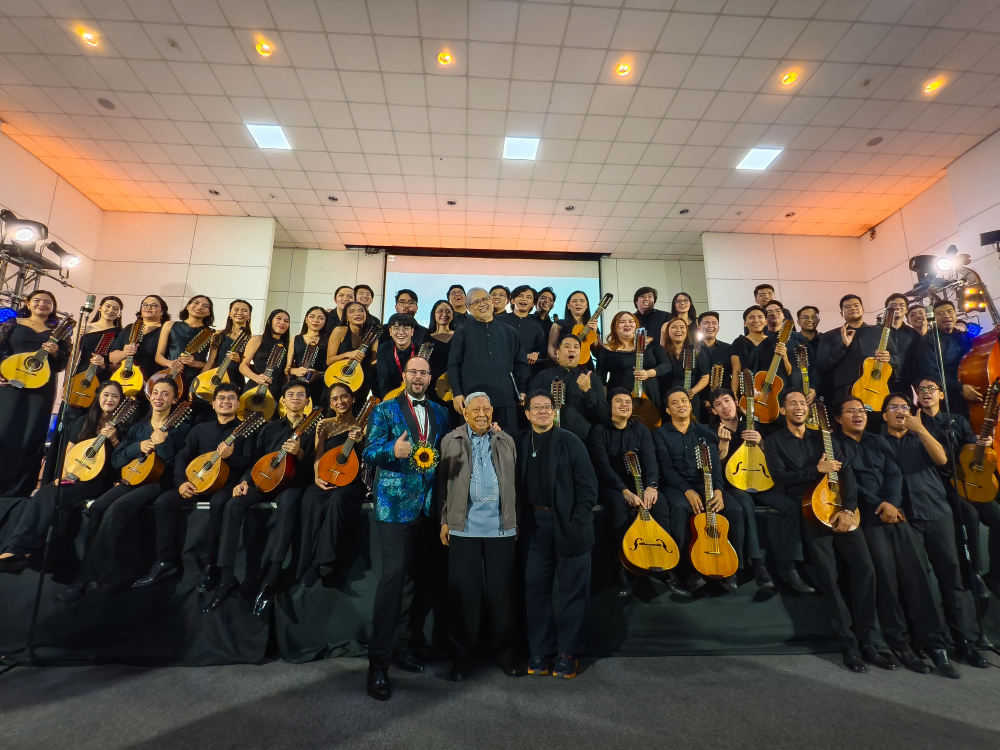
Tsalikian told Lifestyle, “It was a great pleasure and honor for me to be here in Manila for the world premiere of ‘Euphoria.’ It was a great honor to see professor Chino Toledo conducting my new piece with this wonderful rondalla orchestra. The sound was impressive, it’s something new, a new sound to the world. And I think with this orchestra, Filipino people will find the Filipino inside them.”
In composing “Euphoria,” Tsalikian channeled his experiences from his first visit to the Philippines in 2018 while also giving the song “some Greek aura.”
The joyful piece was one of the crowd favorites at the concert. “The people were very enthusiastic about the piece, and told me the best comments about it. I like that the people who came to see the concerts were musicians too—young musicians. It’s much more honorable to have musicians hear your piece and say, ‘Please give me an autograph, please take a photo with me, because I like your piece.'”
Tsalikian added, “I love the sound, the enthusiasm, the traditional feeling, the happy atmosphere… Maestro Chino Toledo has a great sense of humor so he inspires them a lot. If a musician is good and the conductor is bad, the musician will play lower. If the musician is good and the conductor is perfect, the musician would be excellent. In this situation, the musicians are excellent, the conductor is more than excellent, so the whole experience goes to the sky.”
‘Great privilege’
Quintin-Avila also sang Gaetano Donizetti’s “Me Voglio Fa’na Casa” and Manuel P. Velez’s “Sa Kabukiran,” with arrangements by Santos. She told Lifestyle, “I feel very lucky because not all classical singers get the chance to sing with a rondalla group. Nakakatuwa nga kasi they’ve started calling me a rondalla singer because I’ve been singing with smaller rondalla groups since 2015.”
She added, “Iba yung flavor niya, iba yung timbre, iba yung colors, and rondalla is very rooted in our culture so I feel very connected with the music. Sharing my voice with this ensemble is on a different level in terms of fulfillment.”
Santos stepped into the role of conductor for “Kuriri,” his composition, which premiered at the 10th anniversary of Strings of Unity.
Toledo’s “Isahan sa Pagkakaisa,” which premiered at the first International Rondalla Festival in Naga, kicked off the show.
After 11 songs, they took their bows. A garland with a big sunflower was placed around Toledo’s neck and, in a touching gesture, he took it off and hung it around young concertmaster Raylan Dominic Julayco’s neck before patting his shoulder.
Encore
The audience couldn’t get enough of the music, refusing to let them leave the stage. “More,” they clamored. There were two encores: Zequinha de Abreu’s “Tico-Tico no Fubá” and a surprising choice that delighted the crowd—Bini’s “Pantropiko.” You could see the musicians enjoying themselves, even twirling their instruments as they played. There was so much joy in what they were doing—joy that those watching them could also feel.
Through their repertoire, Kuwerdas Filipinas took the audience on a journey—an exciting exploration of sound, expression and emotion that pushed the limits of music.
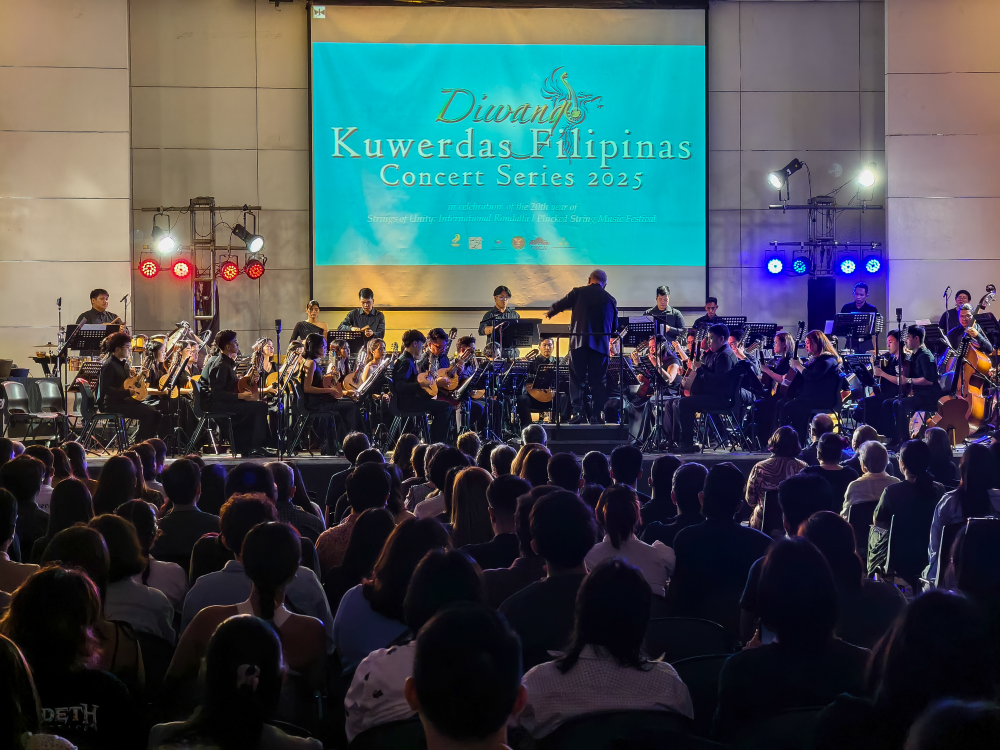
Toledo calls it “yung kiliti ng rondalla.” “With rondalla, musicians have the capability to play any kind of music. It’s expression na Pilipino,” he said.
Santos said, “The concert tonight was very unique in that it is the first time that such a repertoire was heard in the Philippines. It also proved that the rondalla has the capability of expanding its musical offerings which are exceptional and distinctive.”
He added, “Some of the musical techniques that were presented especially by the foreign composers were quite new, especially in the rondalla diaspora. But this simply shows the breadth and scope that the rondalla as a musical resource can reach.”
A gem
Toledo is happy to witness how rondalla has developed over the years.
“We’ve seen it in the musicians and in the attitude of the audience also. Umaangat siya and natutuwa kami kasi yun naman talaga yung goal ng project na ito—mapayabong ang rondalla, mapaunlad lahat ng aspeto ng rondalla.”
Santos said, “I love the rondalla because it is like a gem that is yet to be discovered in its entirety. It is also a musical resource that can grow, given one’s imagination. It is like a limitless store of sonic capabilities that continue to be discovered.”
MSP board member Dr. Elena Rivera Mirano called Kuwerdas Filipinas “a unique contribution of Philippine music to the international world of orchestras. No one, I think, in the world has a symphonic rondalla but we have it.”
Tsalikian said, “You have to keep your heritage and try to advance it, like Kuwerdas Filipinas tries to do.”
Toledo’s tip for young Filipino musicians: “Practice. Watch, practice, study music and try to understand what is beautiful about our culture and music. Masyado nang magulo ang mundong ginagalawan natin, ang ingay-ingay ng lahat, so baka ito na yung paraan para tumahimik lamang ng kaunti.”
He added, “Yung musika, yung rondalla ay dumadaloy sa kaluluwa at puso ng Pilipino.”
Quintin-Avila said, “I hope tuloy-tuloy yang pagpasa ng tradition ng rondalla sa Pilipinas. Nawa’y mamayagpag ang musikang Pilipino, nawa’y tangkilikin natin ang sariling atin.”














